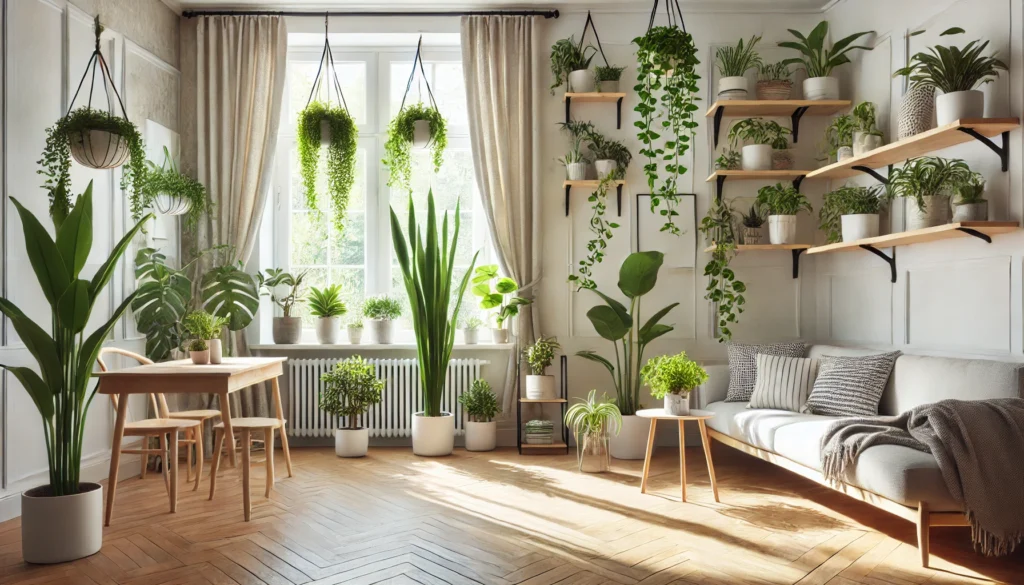
Top Beginner Houseplants for Apartments: Easy-Care Indoor Greens
Bringing greenery into your home doesn’t have to be complicated, especially if you’re new to plant care. If you live in a small space, choosing the top beginner houseplants for apartments ensures you get low-maintenance, air-purifying, and aesthetically pleasing plants that thrive indoors. Whether you have limited sunlight, a busy schedule, or simply want to add a touch of nature to your living space, there are plenty of easy-care options to consider. In this guide, we’ll explore the best beginner-friendly houseplants that require minimal effort while still transforming your apartment into a lush, inviting retreat.
Table of Contents
ToggleBenefits of Growing Houseplants in Apartments
Houseplants are more than just decorative additions—they bring numerous benefits to apartment living. Whether you have a small studio or a spacious high-rise unit, growing indoor plants can transform your space in several ways.
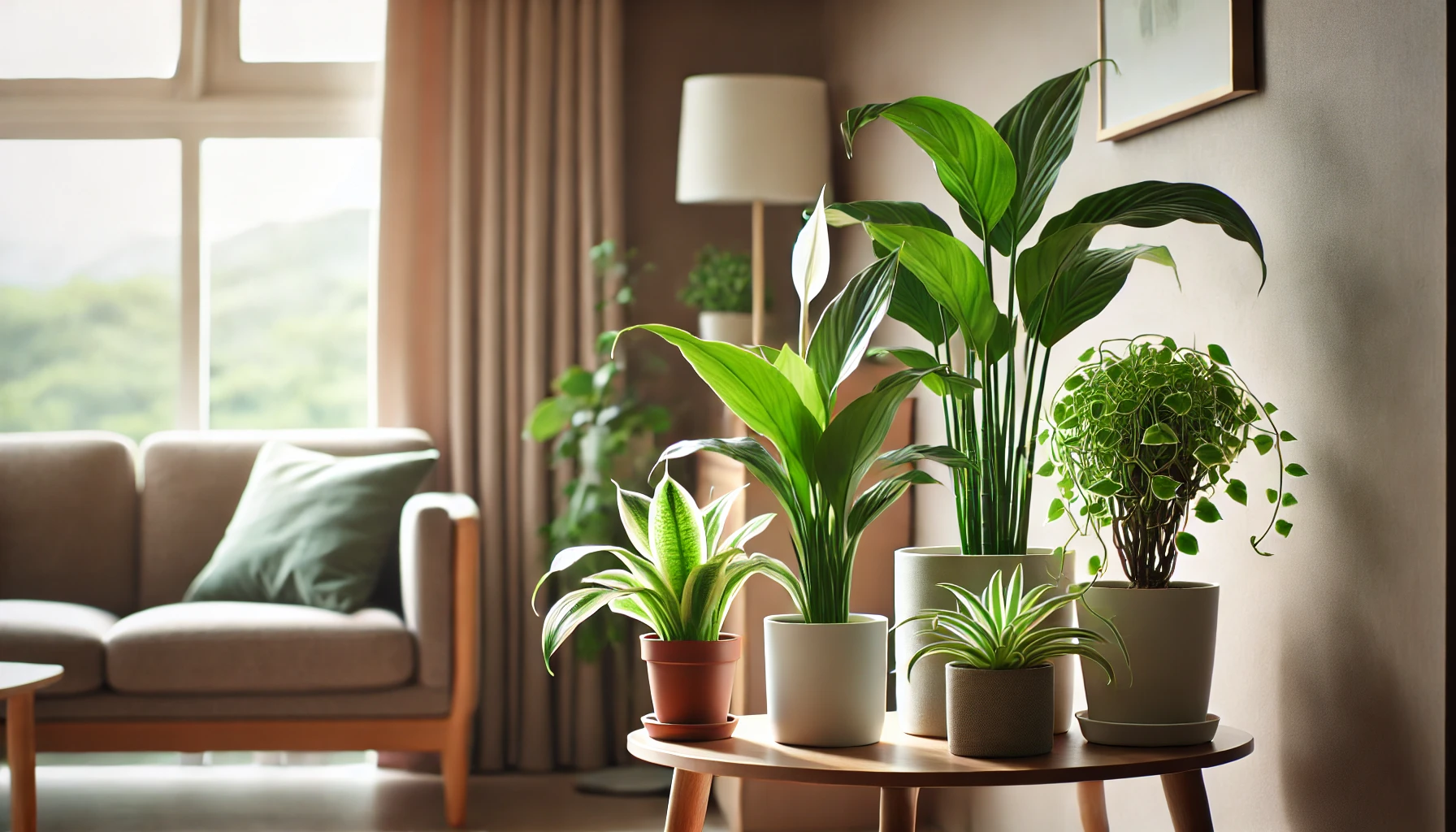
Improves Air Quality
Many houseplants help purify the air by filtering toxins and releasing oxygen. Plants like snake plants, spider plants, and peace lilies can reduce indoor pollutants, creating a fresher and healthier environment.
Boosts Mental Well-being
Being around greenery has been shown to lower stress, improve mood, and enhance overall well-being. Taking care of plants provides a sense of accomplishment and can be a calming activity, especially in busy urban settings.
Enhances Interior Aesthetics
Plants instantly brighten up any apartment, adding color, texture, and vibrancy. Whether you prefer lush tropical foliage or minimalist succulents, they can complement any décor style.
Increases Humidity
Indoor heating and cooling systems can dry out the air, leading to respiratory issues and dry skin. Plants release moisture through transpiration, naturally increasing humidity and improving air quality.
Saves Space with Vertical Gardening
Apartments often have limited space, but houseplants can thrive in vertical arrangements like hanging planters, wall-mounted pots, or tiered shelves, maximizing greenery without cluttering the floor.
Reduces Noise Levels
Plants help absorb sound, making apartments quieter by reducing echoes and outside noise pollution. This is especially beneficial for city dwellers who deal with street sounds or loud neighbors.
Encourages Productivity and Focus
Studies show that having plants in a workspace or study area can boost concentration and creativity. Adding greenery to home offices can help improve focus, making work-from-home setups more effective.
By incorporating houseplants into your apartment, you can enjoy these practical benefits while creating a serene, inviting space. Whether you’re a beginner or a seasoned plant enthusiast, there’s a perfect plant for every home.
Factors to Consider When Choosing Apartment-Friendly Plants
Choosing the right plants for an apartment setting requires careful consideration of several factors. Here’s what you need to keep in mind:
Light Availability
Different plants have varying light needs. Assess your apartment’s natural light:
- Bright, direct light: Ideal for succulents, cacti, and fiddle leaf figs.
- Indirect light: Perfect for pothos, snake plants, and peace lilies.
- Low light: Best for ZZ plants, ferns, and cast iron plants.
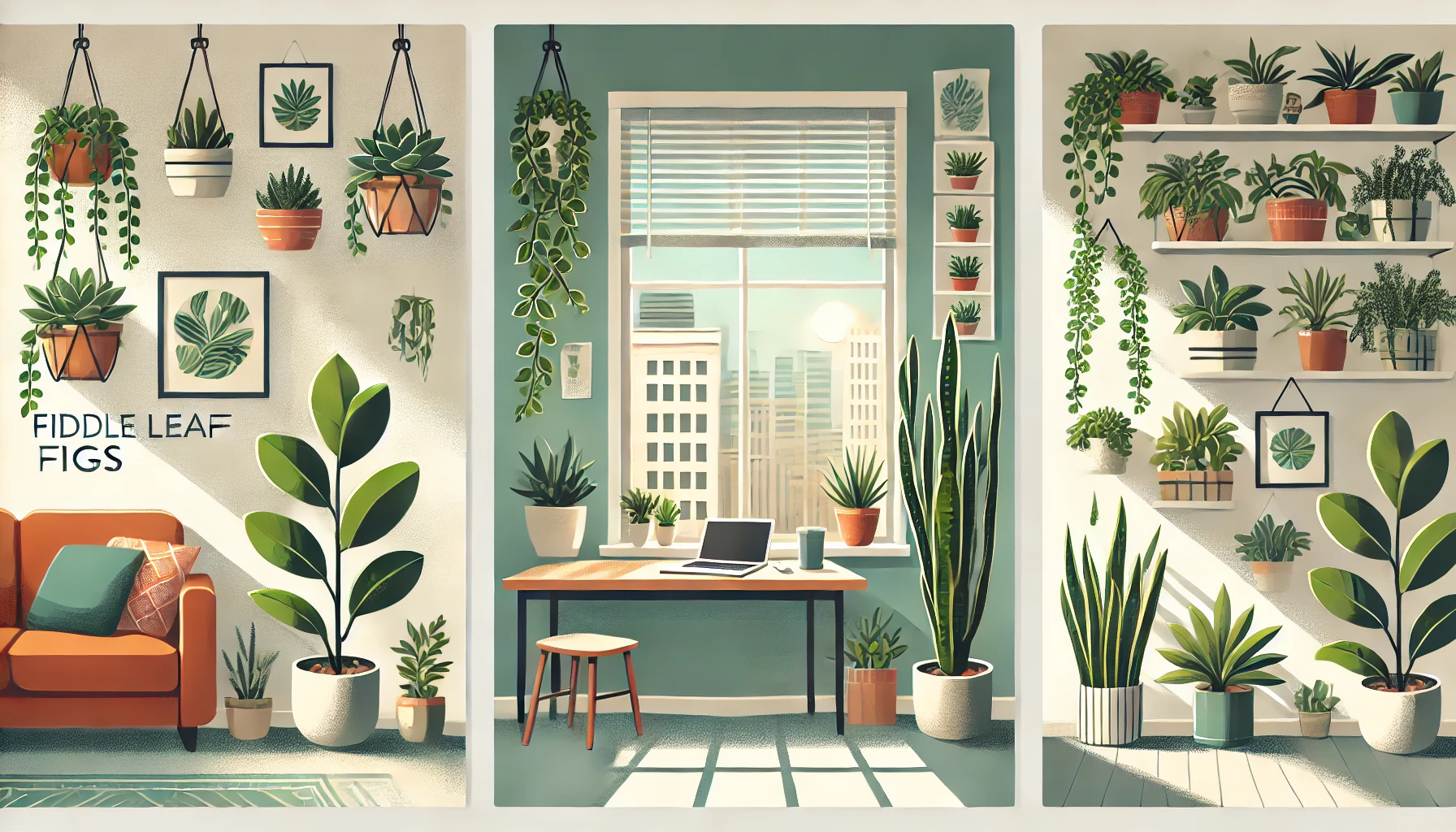
Space Constraints
Apartments often have limited space, so choose plants that fit well:
- Small spaces: Opt for compact plants like air plants, spider plants, and bonsai.
- Hanging or trailing plants: Use macrame hangers for pothos, string of pearls, or ivy.
- Vertical gardening: Consider wall-mounted planters or stackable shelves.
Maintenance Level
Some plants require more care than others. Pick one that suits your lifestyle:
- Low-maintenance: ZZ plant, snake plant, and peace lily.
- Moderate care: Fiddle leaf fig, calathea, and orchids.
- High-maintenance: Bonsai trees and ferns that need regular watering and humidity.
Humidity Needs
Apartments often have dry air, especially with heating or AC.
- Thrives in dry air: Snake plants, succulents, and ZZ plants.
- Prefers humidity: Ferns, calatheas, and alocasias (use a humidifier or mist them).
Pet-Friendliness
If you have pets, ensure your plants are non-toxic. Safe options include:
- Pet-safe: Areca palm, Boston fern, and prayer plant.
- Toxic to pets: Pothos, peace lily, and philodendrons (keep them out of reach).
Air-Purifying Benefits
Some plants improve indoor air quality by removing toxins:
- Top air purifiers: Snake plant, spider plant, and peace lily.
- Best for oxygen boost: Areca palm and aloe vera.
By considering these factors, you can select apartment-friendly plants that thrive in your space while complementing your lifestyle.
Top Beginner Houseplants for Apartments (with Descriptions and Care Tips)
Living in an apartment doesn’t mean you can’t enjoy lush greenery. Many houseplants thrive in small spaces with minimal maintenance. Here are some of the best beginner-friendly houseplants for apartments, along with essential care tips.
Snake Plant (Sansevieria trifasciata)
Why it’s great: Nearly indestructible, tolerates low light, and improves air quality.
Care tips:
- Light: Low to bright indirect light.
- Water: Every 2–3 weeks; allow soil to dry between waterings.
- Bonus tip: Ideal for forgetful plant owners!
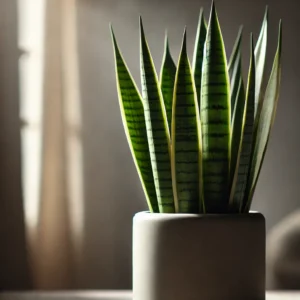
Pothos (Epipremnum aureum)
Why it’s great: Fast-growing, purifies air, and thrives in various conditions.
Care tips:
- Light: Low to medium indirect light.
- Water: Once a week or when soil feels dry.
- Bonus tip: Trim vines to keep it bushy.
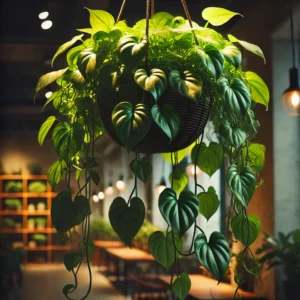
ZZ Plant (Zamioculcas zamiifolia)
Why it’s great: Low maintenance, drought-tolerant, and adds a modern touch.
Care tips:
- Light: Low to bright indirect light.
- Water: Every 2–4 weeks; prefers dry soil.
- Bonus tip: Wipe leaves occasionally to keep them glossy.
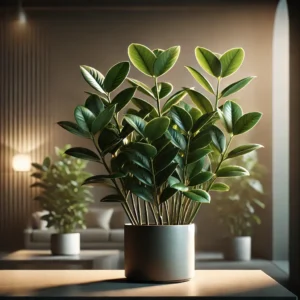
Spider Plant (Chlorophytum comosum)
Why it’s great: Non-toxic, air-purifying, and grows baby plants (pups).
Care tips:
- Light: Bright, indirect light.
- Water: Once a week; keep soil slightly moist.
- Bonus tip: Trim brown leaf tips for a fresh look.

Peace Lily (Spathiphyllum)
Why it’s great: Beautiful white blooms, improves indoor air quality.
Care tips:
- Light: Medium to low light.
- Water: Once a week; wilts when thirsty.
- Bonus tip: Avoid overwatering to prevent root rot.
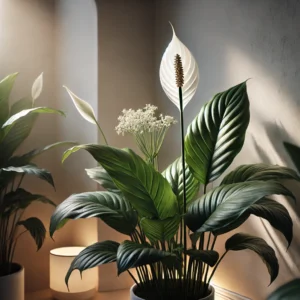
Aloe Vera
Why it’s great: Medicinal benefits, easy to grow, and needs little care.
Care tips:
- Light: Bright, indirect sunlight.
- Water: Every 2–3 weeks; let soil dry completely.
- Bonus tip: Use aloe gel for skin care and minor burns.
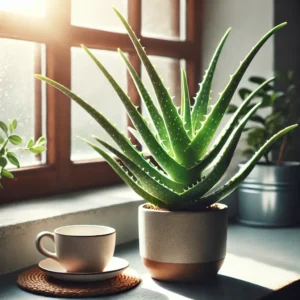
Rubber Plant (Ficus elastica)
Why it’s great: Stylish and adaptable to indoor conditions.
Care tips:
- Light: Bright, indirect light.
- Water: Every 1–2 weeks; let soil dry slightly.
- Bonus tip: Rotate occasionally for even growth.
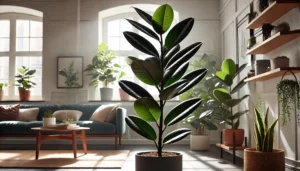
Easy-to-Care-For Greenery
Creating a lush, green space doesn’t have to be high maintenance. Many plants thrive with minimal effort, making them perfect for busy individuals or beginners. Here’s how to choose and care for easy-to-maintain greenery:
Choose Low-Maintenance Plants
Opt for plants that require little watering, pruning, or fertilizing. Some top choices include:
- Snake Plant (Sansevieria): Tolerates low light and irregular watering.
- Pothos (Epipremnum aureum): Grows well in various light conditions and needs occasional watering.
- ZZ Plant (Zamioculcas zamiifolia): Drought-resistant and thrives in low-light areas.
- Peace Lily (Spathiphyllum): Requires minimal care but adds elegance to any space.
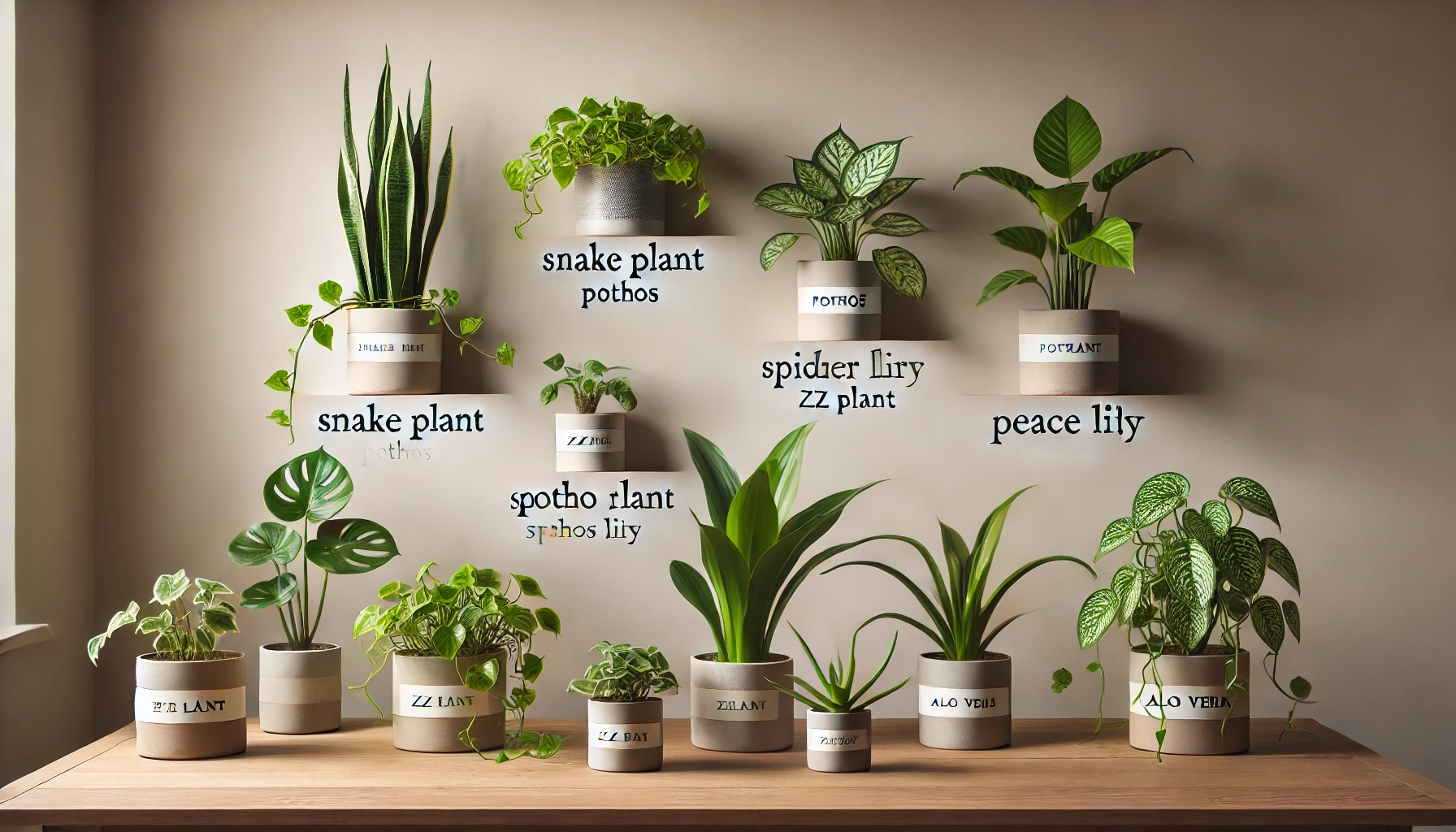
Use the Right Soil and Containers
- Well-draining soil prevents root rot.
- Choose pots with drainage holes to avoid overwatering.
- Self-watering planters are great for minimal upkeep.
Water Wisely
- Follow a “less is more” approach—most easy-care plants prefer drying out between waterings.
- Use room-temperature water to avoid shocking plant roots.
- Consider a watering schedule to prevent over or underwatering.
Provide Proper Lighting
- Low-light plants like ZZ plants and snake plants are perfect for dim spaces.
- Medium-light plants, such as pothos, can thrive in indirect sunlight.
- Rotate plants occasionally to ensure even growth.
Minimal Fertilization Needs
- Feed plants once every 2-3 months with a balanced, slow-release fertilizer.
- Avoid over-fertilizing, as it can damage roots.
Compact and Space-Saving Options
If you have limited space, don’t worry—you can still grow thriving plants with the right compact and space-saving strategies. Whether you have a small yard, balcony, or indoor space, these options will help you maximize your gardening potential.
Vertical Gardening
Make use of walls, fences, and trellises to grow plants upward instead of outward. Hanging planters, wall-mounted pockets, and vertical garden towers allow you to grow herbs, flowers, and even vegetables in a fraction of the space.
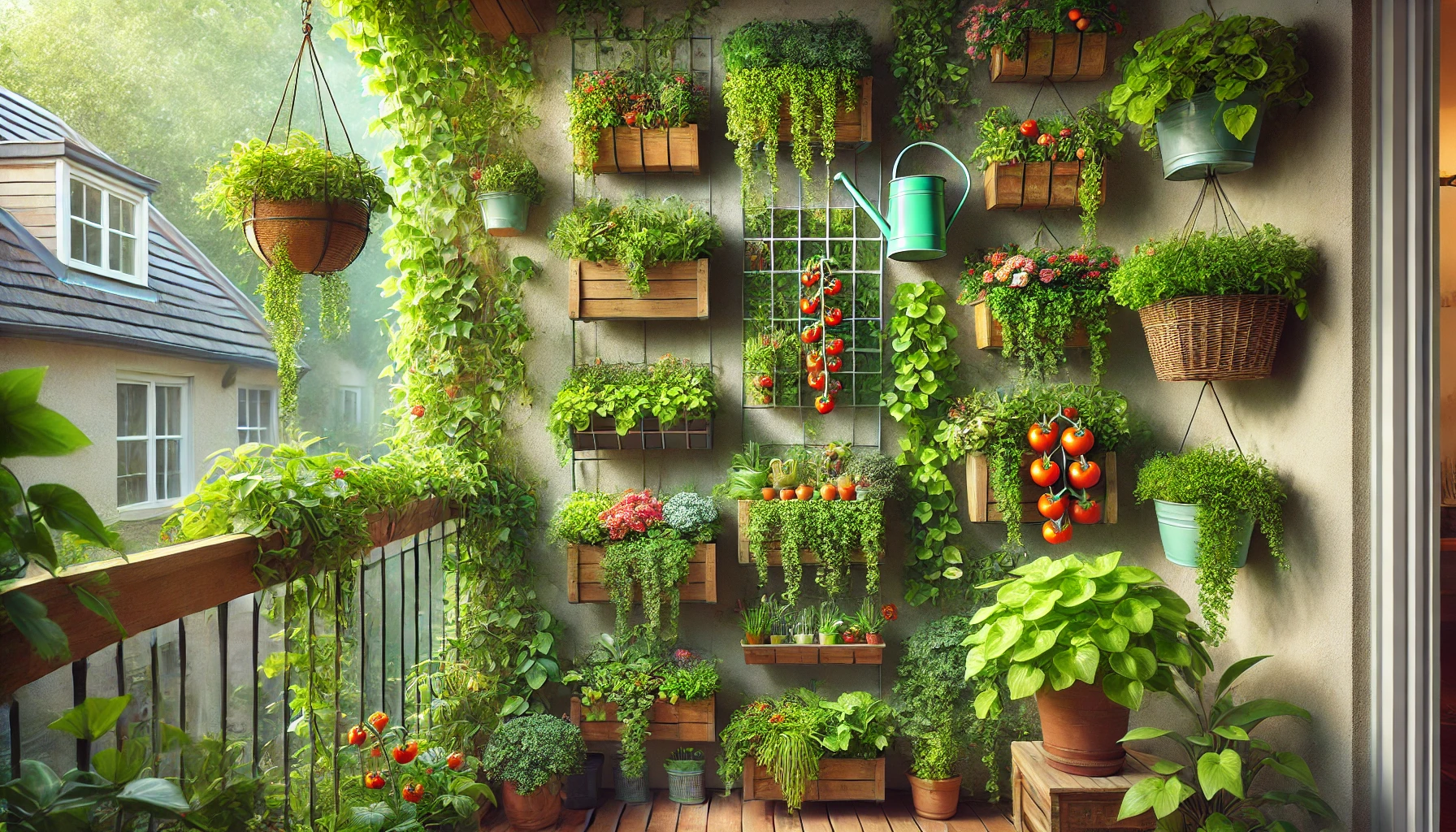
Container Gardening
Pots and planters give you the flexibility to grow plants anywhere. Choose stackable or multi-tiered containers to grow more in less space. Self-watering pots also help maintain moisture levels with minimal effort.
Raised Beds with Compact Layouts
If you have a small garden, raised beds with intensive planting techniques like square-foot gardening can maximize yields. Planting in grids instead of rows ensures no wasted space while keeping plants easily accessible.
Dwarf and Miniature Varieties
Many plants come in compact varieties perfect for small spaces. Look for dwarf fruit trees, miniature roses, and compact vegetable plants that provide the same benefits as full-sized versions but take up less room.
Hanging Baskets and Rail Planters
Make use of railings, balconies, and ceilings with hanging baskets or rail planters. These options work great for trailing plants like strawberries, herbs, and petunias, keeping them off the ground while still thriving.
Hydroponics and Aeroponics
Soil-free gardening methods like hydroponics and aeroponics allow you to grow plants indoors or in small areas. These systems use water and nutrients efficiently while producing high yields in compact setups.
With these space-saving techniques, you can enjoy a lush, productive garden no matter how small your space is!
Essential Care Tips for Apartment Houseplants
Caring for houseplants in an apartment setting comes with unique challenges, including limited space, controlled temperatures, and varying light conditions. Follow these essential care tips to keep your indoor plants thriving:
Choose the Right Plants
Opt for low-maintenance varieties like pothos, snake plants, peace lilies, and ZZ plants. These species tolerate lower light and require minimal care.
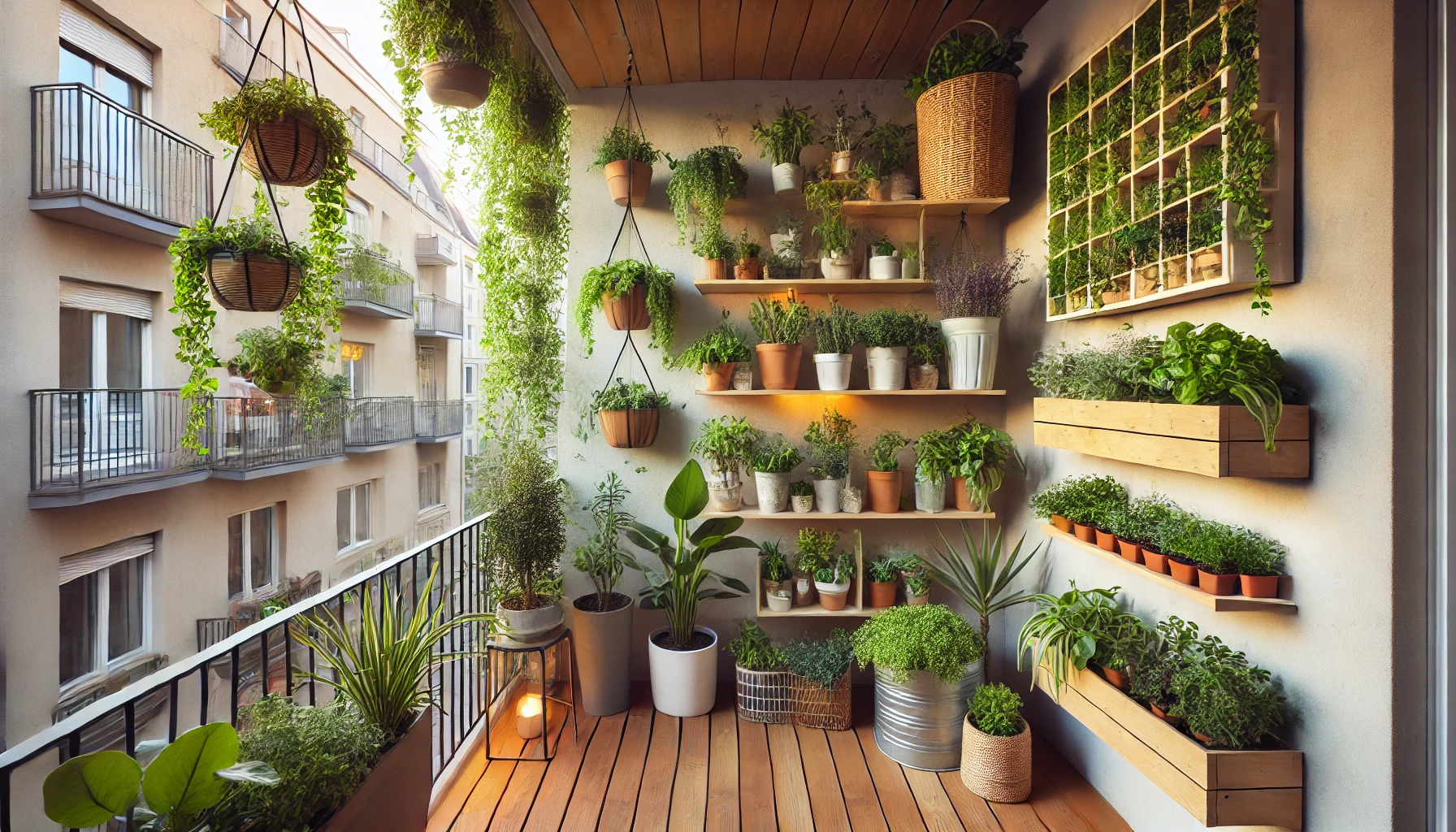
Optimize Light Conditions
Place plants near windows with indirect sunlight. If natural light is limited, use LED grow lights to supplement. Rotate plants every few weeks to ensure even growth.
Water Wisely
Overwatering is the most common mistake. Check soil moisture by inserting your finger an inch deep—water only when dry. Use pots with drainage holes to prevent root rot.
Maintain Proper Humidity
Apartment air can be dry, especially with heating or air conditioning. Mist plants occasionally, place a humidity tray nearby, or use a humidifier to maintain moisture levels.
Feed Your Plants
Use a balanced liquid fertilizer once a month during the growing season (spring and summer). Reduce feeding in fall and winter when plant growth slows.
Prune and Clean Regularly
Trim dead or yellowing leaves to encourage new growth. Wipe dust off leaves with a damp cloth to help plants absorb light more effectively.
Monitor for Pests
Check for pests like spider mites and fungus gnats. If spotted, wipe leaves with insecticidal soap or neem oil. Ensure proper air circulation to prevent infestations.
Repot When Needed
If roots outgrow the pot or soil dries out too quickly, it’s time to repot. Choose a pot 1–2 inches larger and refresh the soil for continued healthy growth.
By following these simple yet effective care tips, you can enjoy lush, vibrant houseplants in your apartment year-round!
Incorporating plants into your apartment is an easy and rewarding way to bring life, color, and freshness to your home. By choosing the top beginner houseplants for apartments, you can enjoy the many benefits of indoor greenery without the stress of complicated care routines. Whether you opt for the low-maintenance Snake Plant, the resilient Pothos, or the stylish Aloe Vera, each plant offers its unique charm and requires minimal attention to thrive.
Remember, the key to successful plant care is understanding the specific needs of each plant, such as light, water, and space. With a little effort and patience, your plants will not only grow but also become a source of joy and connection with nature in your living space.
Start small, choose easy-care options, and watch your apartment transform into a lush, welcoming haven. Happy planting!
Frequently Asked Questions(FAQ)
What are the best beginner houseplants for apartments?
Some of the top beginner houseplants for apartments include snake plants, pothos, ZZ plants, peace lilies, and spider plants. These plants are low-maintenance, adaptable to different light conditions, and easy to care for, making them ideal for new plant owners.
How do I care for top beginner houseplants for apartments?
Most beginner houseplants thrive with minimal care. Ensure they receive the right amount of light (indirect light is usually best), water them only when the soil is dry, and avoid overwatering. Regularly clean the leaves and check for pests to keep them healthy.
Do beginner houseplants need a lot of sunlight?
No, many top beginner houseplants for apartments, like the ZZ plant and snake plant, can tolerate low light conditions. However, some like pothos and peace lilies thrive in bright, indirect light. Always check the light requirements of each plant to ensure optimal growth.
How often should I water beginner houseplants in an apartment?
Water your plants when the soil feels dry to the touch. Generally, this means watering once a week for most beginner houseplants. However, always check the specific watering needs for each plant, as some may require more or less water.
Can I keep beginner houseplants in a small apartment?
Yes! Many top beginner houseplants for apartments are perfect for small spaces. Plants like snake plants and pothos don’t require a lot of room and can thrive in compact areas with indirect light, making them ideal for apartments.
Are beginner houseplants low maintenance?
Yes, most top beginner houseplants are low-maintenance. They are forgiving when it comes to light and watering, making them great for people who are new to plant care or have busy lifestyles. Just a little attention to watering and light can go a long way.
What if my beginner houseplants show signs of stress?
If your plants show signs of stress, such as yellowing leaves or wilting, check the light, water, and humidity levels. Common problems are often caused by overwatering, insufficient light, or pests. Make the necessary adjustments, and your plants should recover.

